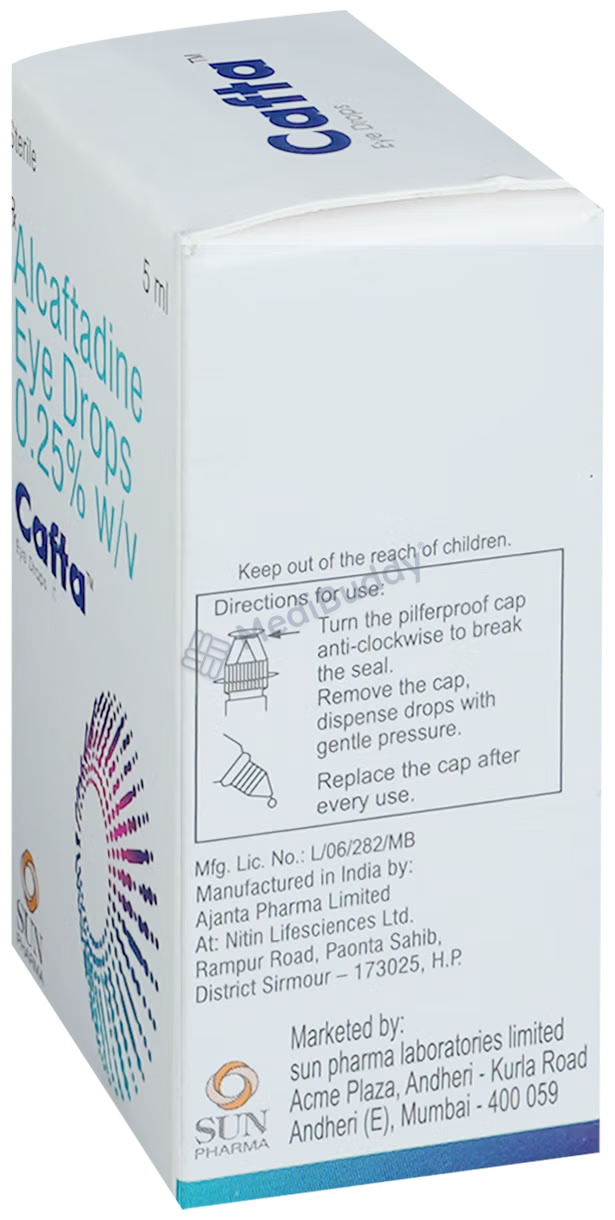Cafta Eye Drop
By Cafta
Rx
5ml Eye Drop in a Bottle

Composition
Alcaftadine(2.5mg/ml)

Manufacturer - Sun Pharmaceutical Industries Ltd
Plot no 107/108,Namli block , Ranipool, East Sikkim 737135

Expires on or after
April, 2026

liver
When using Cafta Eye Drop, there is no known interaction or established safety advice specifically related to liver issues. It is important to note that no caution or warning has been documented regarding the use of Cafta Eye Drop and its impact on the liver. If you have any concerns about how Cafta Eye Drop may affect your liver, it is recommended to consult with your doctor for proper guidance before using the product.

kidney
Consult with your doctor for proper guidance before using Cafta Eye Drop.

alcohol
No interaction between Cafta Eye Drop and alcohol has been found. It is always best to consult with your doctor when considering alcohol consumption while using Cafta Eye Drop.

driving
Cafta Eye Drop may temporarily blur your vision after use. Refrain from driving until your vision is clear.

pregnancy
Cafta Eye Drop is usually safe to use during pregnancy. While animal studies found minimal negative effects on fetuses, there is limited data on humans. It is advisable to consult a doctor before using Cafta Eye Drop during pregnancy.

breastfeeding
Cafta Eye Drop is likely safe for breastfeeding mothers. Limited data indicates no major risk to the baby.
| Habit Forming | No |
| Chemical Class | Imidazobenzazepine Derivatives |
| Therapeutic Class | - |
| Action Class | H1 Antihistaminics (second Generation) |
₹288
Inclusive of all taxes
Content verified by

Dr. Gowri Kulkarni
MBBS - General Medicine, DNB - Psychiatry, MRCGP [INT] Family Medicine, BSIC (BACP)
Last update on 01-Oct-2024






